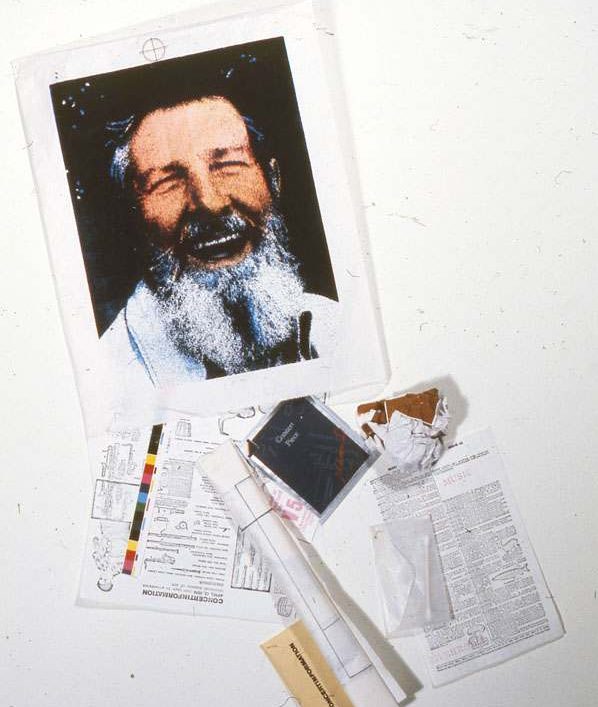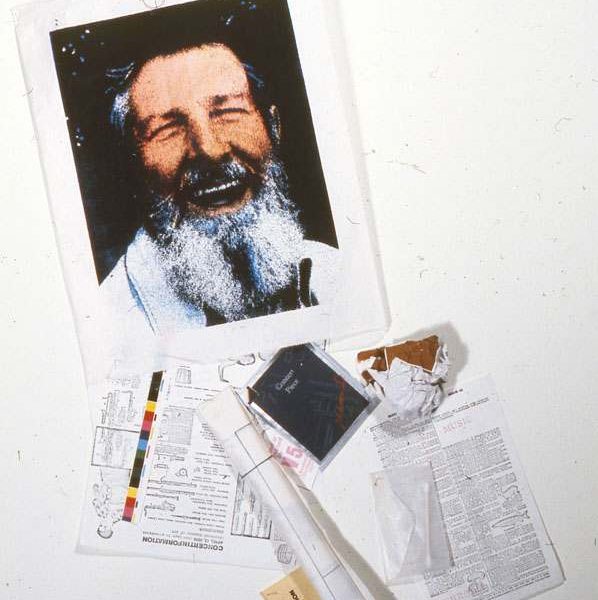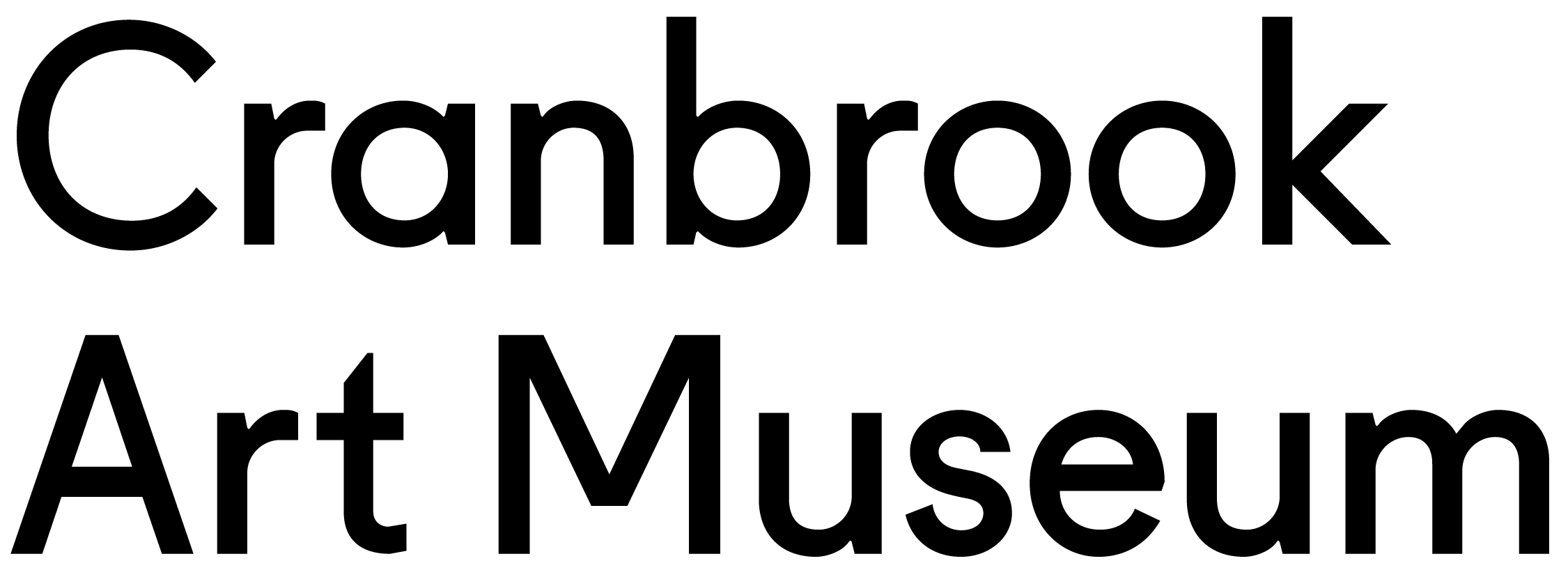Join us for a special evening celebrating the 50th anniversary of the performance John Cage Listens to John Cage with a contemporary look at his two fascinations – music and mushrooms. The museum will be open late with a pop-up exhibition and live lecture and performance by collaborators Dr. Timothy James, Curator of Fungi, University of Michigan Herbarium, and Detroit Bureau of Sound on mushrooms, music and John Cage’s legacy. Each speaker will give a presentation on their respective expertise, followed by a collaborative performance inspired by John Cage’s legacy.
Register for Music, Mushroom, Mechanisms: The John Cage Listens to John Cage 50th Anniversary.
In 1974 John Cage visited Cranbrook Academy of Art at the invitation of Irwin Hollander (Head of Printmaking and Artist-in-Residence, 1973-76), the exhibition of his work Music Mushroom Manuscripts, including The Mushroom Book was exhibited at Cranbrook Art Museum accompanied by the performance John Cage Listens to John Cage. Organized and conducted by the 17-year-old Zen Buddhist Stephen Tennent, the concert included a suite of materials designed by the students of the Printmaking Department which we refer to as The Cage Bag.
The exhibition features Cage’s The Mushroom Book (1972), documentation from John Cage Listens to John Cage including archival photos, the original transparencies of the chance operation carried out for the performance of Variations IV, and other performance ephemera from the archives of conductor Stephen Tennent. The Cage Bag with contributions by Charles Baughman (CAA MFA Printmaking 1975), Doug Huston (CAA MFA Printmaking 1975), J. Kevin Byrne (CAA MFA Design 1974), Jerome (Jerry) Mullane (CAA MFA Printmaking 1975), and others who are unnamed, and photos from the campus visit by Judith Rich and Stephen Milanowski (CAA MFA Photography 1978). Finally, a sample of the mushroom species Stropharia Rugoso-Annulata, collected by John Cage and donated to the University of Michigan Herbarium, which is also featured in the Mushroom Book.
This program is accompanied by a campus-wide mushroom hunt occurring the following day, Saturday, October 5 at 10am, which meets at the Cranbrook Institute of Science.
About Detroit Bureau of Sound
Cactus virtuoso, composer, and sonic evangelist, Zac Bru aka Detroit Bureau of Sound (DBS) is known as one of Detroit’s “most influential artists homing in on the craft of live performance” (CJAM 99.1FM). Compulsively futuristic, Zac’s influences span the past several centuries of musical otherness, from Western classical traditions to the now-global realm of electronica. DBS productions have appeared in iconic spaces like the Detroit Opera, Detroit Institute of Arts, Red Bull Arts Detroit, MoCAD, the Michigan Science Center, and many more – one such concert was described as “sounding as raw as mating bull elephants” (Lansing City Pulse on “X is for Xenakis”, 2013).
DBS is perhaps best known for playing an amplified cactus- a contact microphone on a plant, fed into a synthesizer; a form of music which the composer John Cage first played in Detroit in the 1970’s, and was reintroduced to the birthplace of techno at the ‘John Cage Rave’, Zac’s 2017 event at Red Bull Arts Detroit, where Juan Atkins, himself, was present.
About Timothy James
Timothy Y. James is a Professor of Ecology and Evolutionary Biology at the University of Michigan, the Curator of Fungi at the University Herbarium, and the Lewis E. Wehmeyer and Elaine Prince Wehmeyer Chair in Fungal Taxonomy. His position as Curator of Fungi was held by Alexander Smith, a lauded mycologist and collaborator with John Cage on The Mushroom Book. He received his BSc in Botany from the University of Georgia and his PhD from Duke University with Dr. Rytas Vilgalys.
His scholarship focuses on reconstructing the Fungal Tree of Life and using genomics to determine fungal mating systems, ecology, and life histories. Taxonomic foci include the zoosporic true fungi and other early diverging lineages of fungi, particularly those that are unculturable. Current efforts focus on developing methods for single cell genomics of fungi for the exploration of fungal diversity and the relationship of genotype to phenotype, mycoviruses, and the role of mitotic recombination during clonal cycles. He has served as MSA Councilor, and on several MSA committees: Research Awards, Student Awards, Distinctions, and Karling Lecture. Editorial contributions include co-editing The Kingdom Fungi (ASM Press) and serving as Associate Editor for Mycologia. Additional roles include Director of the department’s Frontiers Master’s Bridging Program, Co-Founder and Director of the Midwest American Mycological Information educational non-profit, and member of the DOE Joint Genome Institute’s Users Executive Committee. Tim is a fellow of the American Society of Microbiology and the Canadian Institute for Advanced Research, Fungal Kingdom: Threats and Opportunities.
About John Cage Listens to John Cage & The Cage Bag
In early April of 1974, artist-composer John Cage traveled to Cranbrook to celebrate the opening of Music–Mushrooms–Manuscripts at the Art Museum, an exhibition of his drawings, photographs, books, poems, prints, and sound recordings. Several featured works were printed by Irwin Hollander (1973-1975 head of the Cranbrook Academy of Art Printmaking department). On the evening of April 12, Cage attended a concert of his own music organized by then 17-year-old conductor Stephen Tennent — aptly titled John Cage Listens to John Cage — performed by local professional musicians as well as students from the Cranbrook Upper School and neighboring Andover and Seaholm high schools. The program featured a 40-piece ensemble of brass, string, woodwind, and non-pitched percussion instruments.
In the fall of 1973 Irwin Hollander met the young Zen Buddhist conductor Stephen Tennent by chance at a gallery opening, Tennent had been working on a presentation of works by John Cage and Hollander invited him to present it during Cage’s visit to campus scheduled for the following spring.
Tennent’s aim was to present a trilogy by John Cage that had never been performed publicly in its complete three-part form. At the highest level, it was meant to be understood contextually as a serious examination of the Zen Buddhist views regarding the three separate levels of reality. Each of the three works in the trilogy was inspired by Hidekazu Yoshida’s interpretation of the three lines of Japanese Haiku poetry. Atlas Eclipticalis, the first work, represents ‘nirvana’. Variations IV, the second work, represents ‘samsara’- the turmoil of everyday life. 0’0” represents one individual action, or “dharma moment”. Prelude for Meditation was chosen to open the performance of Cage’s trilogy presented at Cranbrook. It demonstrates Cage’s use of prepared piano, minimalism, and his effective use of silence, while emulating the three tones that precede and follow formal Japanese zazen meditation.
Cage spent much of his time at Cranbrook with Irwin Hollander’s Printmaking students, playing chess and conversing but holding no formal critiques. Spearheaded by Printmaking students Chuck Baughman (CAA Printmaking 75) and Doug Huston (CAA Printmaking 75), the “Cage Bag” project accompanied the performance. A suite of droll and imaginative prints–including a program for the concert performance and limited-edition postcards–were tucked into white paper bags silk-screened with Cage’s face. The Cage Bags were distributed to the audience on the evening of the John Cage Listens to John Cage performance, with the goal to have everyone in attendance wear the bags over their heads, creating a sea of John Cages staring back at the stage. The project was spearheaded Printmaking students by Doug Huston and Charles (Chuck) Baughman who created the print for the Cage Bag. While most objects included were contributed by individual Academy students we do not have a record of all of the contributors.
Charles Baughman (CAA MFA Printmaking 1975) created the discarded print depicting Beethoven and music from his Fifth Symphony which was presented crumpled into a ball, as well as the envelope printed with “Concert Information” containing a print of an ear and a sheet of Beethoven’s music. Doug Huston (CAA MFA Printmaking 75) created the set of 12 postcards (one per bag and intended to be traded) featuring fellow student Jim Poole wearing the Cage Bag as a mask about campus and the “Inspected by” quality control labels personalized for each person assembling the bag. J. Kevin Byrne (CAA MFA Design 1974) contributed a transparent glycine envelope containing a single q-tip. Jerome (Jerry) Mullane (CAA MFA Printmaking 1975) created the print of a caged bird, which was presented rolled and tied with a string. The remaining objects were produced collectively or the individual contributor is unknown, they include: a color test strip, a 3×4” carbon copy card labeled “concert piece” with “personal” handwritten in one corner, a xerox page of the definitions of the word “open”, a page of a dictionary with the definitions of the words Mushroom and Music removed and replaced with a red stamp of each word, and the concert program.
About The Mushroom Book
John Cage is widely recognized as one of the most influential and radical composers of the twentieth century, but is lesser known for his contributions to the fields of visual art and mycology. Beginning in the 1960s, the artist prolifically produced drawings, etchings, watercolors, and prints, all of which were informed by the same chance operations and interpretations of Zen Buddhism that suffused his musical compositions. He was also an avid and abiding amateur mycologist—a practice that first piqued his interest after his move to the sylvan Hudson River Valley in 1954—and along with four colleagues including Lois Long, founded the New York Mycological Society in 1962. Cage’s passion for fungi did not operate in tandem to his artistic practice; it was in fact an important element of his ethos—symbolically intertwined with his exploration of Zen Buddhism and examination of life. As a man whose perception of his own environment was acute and inclusive, Cage declared, “Nothing more than mushroom identification develops the powers of observation.”
Cage’s most extraordinary artistic tribute to fungi is unquestionably the Mushroom Book, a collaborative work with two of his longtime colleagues in the mycological field. The portfolio of ten sets of lithographs was printed in a limited-edition run of seventy-five copies, and boasts beautifully executed illustrations by fellow amateur mycologist and textile designer Lois Long; species descriptions by renowned mycologist and University of Michigan botany professor Dr. Alexander H. Smith (a renowned mycologist based in Ann Arbor, coincidentally also published the book Common Edible and Poisonous Mushrooms of Southeastern Michigan with the Cranbrook Institute of Science in 1938); and fanciful, hand-scrawled reflections by the artist himself, all relating to mushrooms. Cage’s words and phrases were determined by throwing the I-Ching, or the Book of Changes, an ancient Chinese text of divination with which he became acquainted in 1951 and had utilized to determine aspects of most of his compositional works ever since.
Each lithographic set is presented as a bifolium—the first page exhibits Cage’s musings, scattered across the surface like leaves on a forest floor. His disjointed text fragments recall personal foraying adventures, recipes, and quote extensively from mycological texts and individuals Cage admired, especially R. Buckminster Fuller and Henry David Thoreau. When opened, the right side of the leaf displays Lois Long’s fanciful, naturalistic illustrations, with an overlay of Smith’s species descriptions printed on Japanese paper. Cage’s words are reproduced in legible type on the overlay’s margins—the artist confessed that although his hand-written texts are difficult to read, “this enables one, if he wishes, to hunt for a particular text in a given lithograph, just as he might hunt for a particular mushroom, late summer or fall, in a forest.”
The edition of The Mushroom Book (2014.21) owned by CAM was acquired from the estate of Irwin Hollander in 2014 for the exhibition My Brain is My Inkstand: Drawing as Thinking and Process (November 16, 2023-March 30, 2014) curated by Nina Samuel.
Music Mushrooms Mechanisms is organized by Cranbrook Art Museum and curated by Lyla Catellier, Curator of Public Programs. The event series is presented with gratitude to Shelley Selim, 2013-2015 Jeanne and Ralph Graham Collections Fellow, Stephen Tennent, Conductor, Steve Milanowski (CAA MFA Photography 1978), Doug Huston (CAA MFA Printmaking 1975), and Chuck Baughman, (CAA MFA Printmaking 1975) and generously supported in part by Kelsey and Evan Ross.
Tagged:
Watch Previous Lectures






